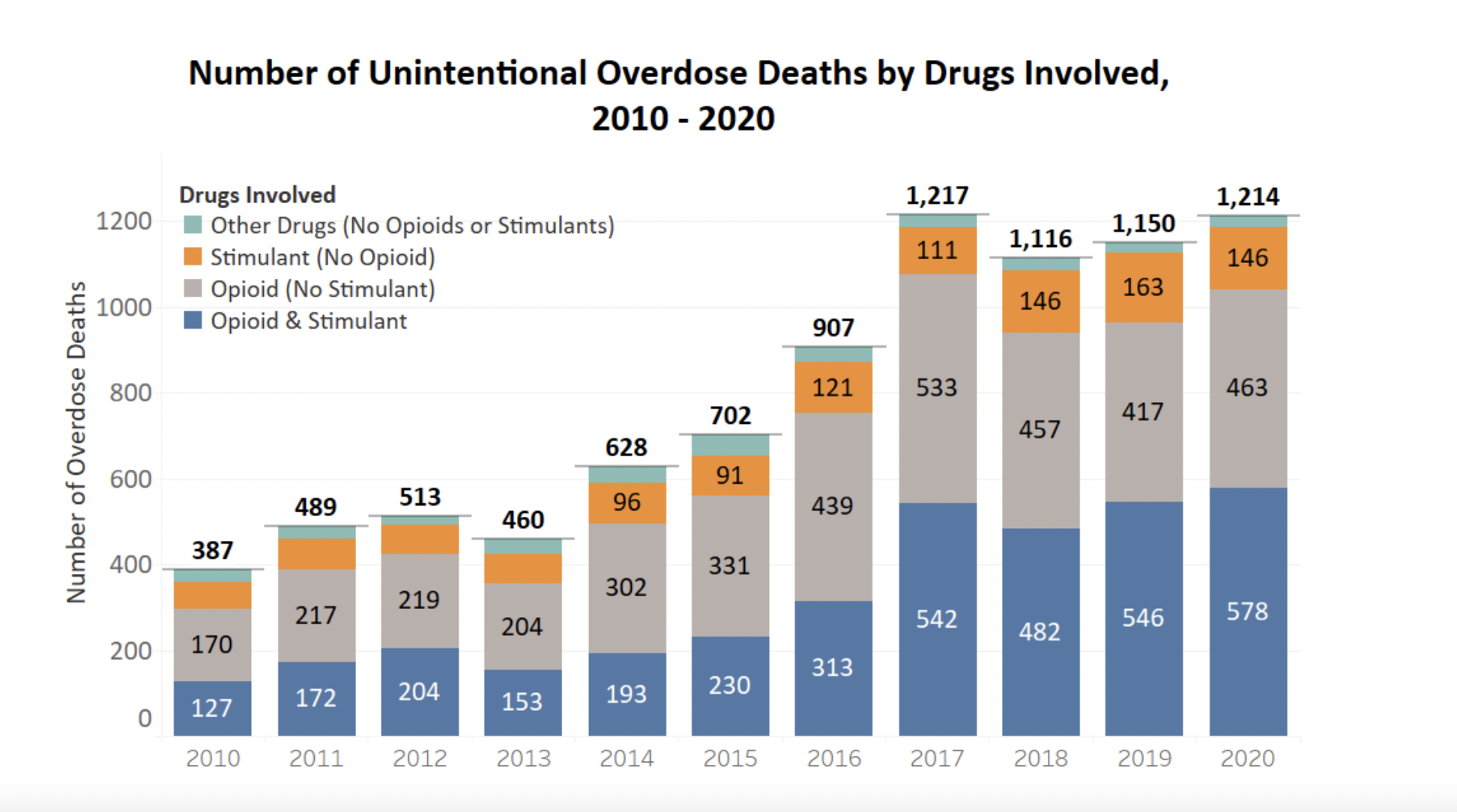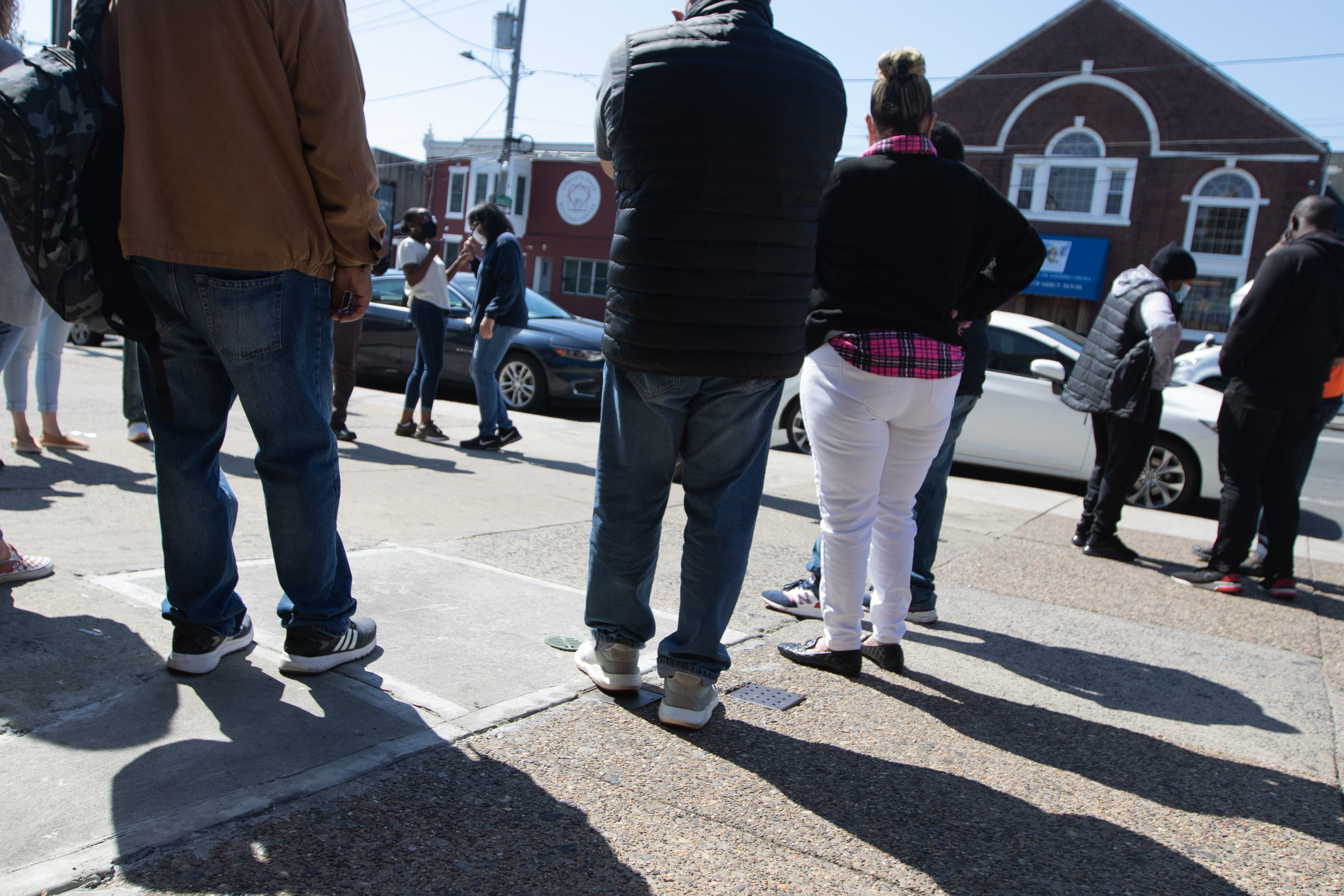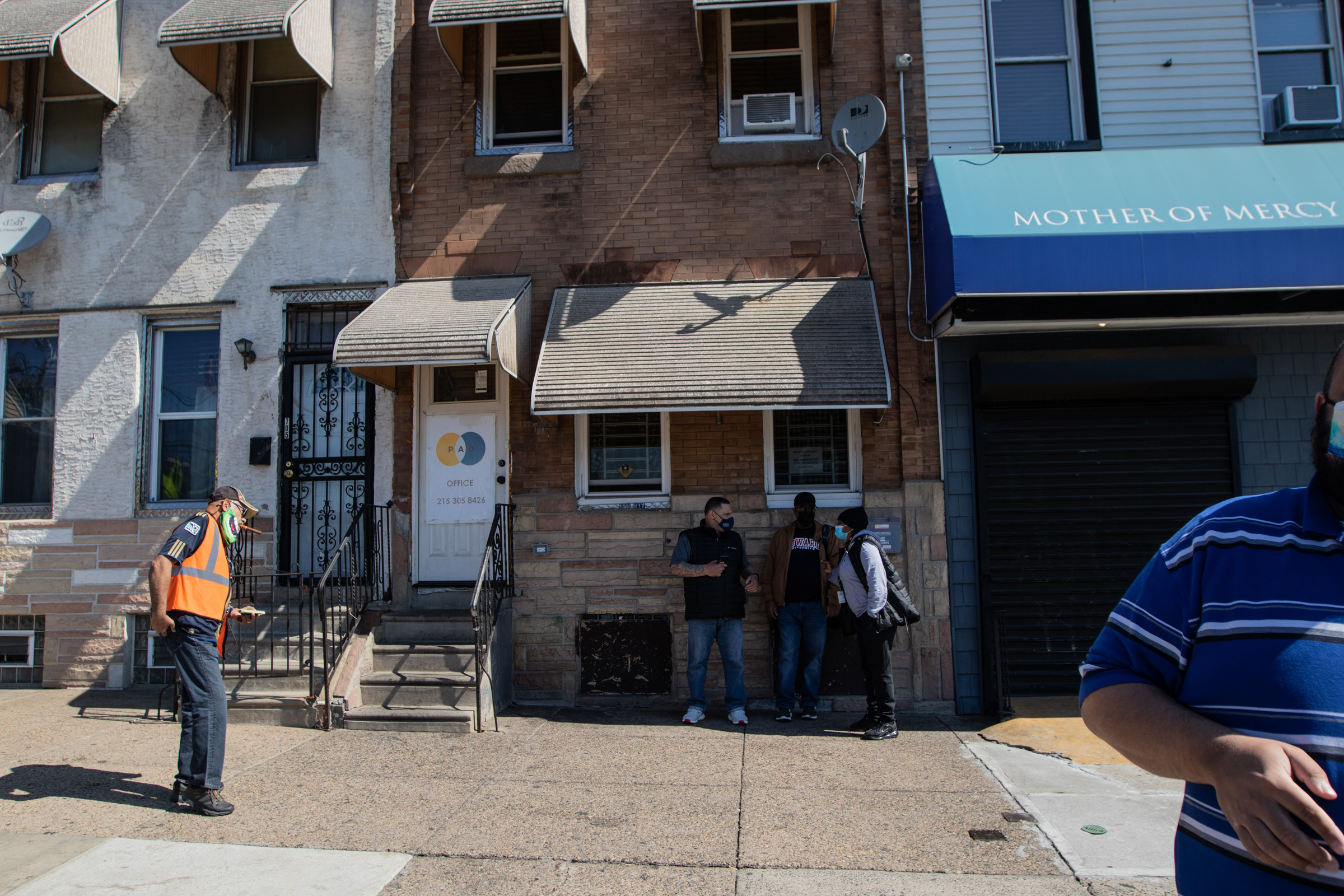Kensington news: Turkey giveaway, ‘Snakes Alive!’ and more
Hey there, neighbors. Coming up this week, Richmond Library is being visited by some scaly friends, we found another Thanksgiving

Update 06/07/2021: The 2021 Opioid Response Unit Action Plan originally stated that in 2020 the city experienced the highest number of fatal overdoses since the city began counting. However, after finalizing last year’s count of fatal overdoses, the Philadelphia Department of Public Health announced that a total of 1,214 fatal overdoses occurred in 2020 — the second-highest number of fatal overdoses the city has counted. This article has been updated to reflect that.
After 2020’s record number of fatal overdoses in Philadelphia, the city’s Opioid Response Unit released its first action plan for the city and Kensington neighborhood. The plan, released April 22, includes some existing and some new initiatives to address the ongoing crises in the area.
This isn’t the first time fatal overdoses have spiked in the city.

In 2017, fatal overdoses in Philadelphia reached their highest number on record since the city began tracking the number of people who die from overdoses. The following year, the mayor used an executive order to form the Philadelphia Resilience Project — an initiative that brought 35 city agencies together to respond to the overdose crisis in Kensington. When the mayor’s executive order expired in December 2019, the city decided to continue those efforts.
By February 2020, the city formed the Opioid Response Unit (ORU). Tasked with many of the same responsibilities as the Resilience Project, ORU addresses the overdose crisis city-wide instead of a specific neighborhood.
Between 2017 and 2019, fatal overdoses in Philadelphia slightly declined and then remained at a steady rate, according to the Philadelphia Department of Public Health. But in 2020, the city experienced the second-highest number of fatal overdoses in a year, according to the Department of Public Health.
The Medical Examiner’s Office has kept track of accidental deaths caused by poisoning or noxious substances, which includes fatal overdoses, for decades, according to Department of Public Health Spokesperson James Garrow. The city has reported the number of accidental deaths caused by fatal overdoses since at least 2000, when deaths were in the low hundreds, according to a Vital Statistics Report.
The Department of Public Health attributes the increase of fatal overdoses in 2020 to a variety of factors, including barriers to medical treatment and social isolation during the start of the coronavirus pandemic. A high percentage of overdoses occurred in personal residences as well.
According to the city’s data for 2020, a significant increase in overdoses occurred among Black and Latinx residents, and the locations where overdoses occurred expanded in North and West Philadelphia.

Kensington community members are used to calling for improvements to their neighborhood, as demonstrated in last month’s march up Kensington Avenue due to SEPTA’s closure of Somerset Station and last summer’s protest in the heart of Kensington to send a message to City Hall.
In response to the new ORU action plan, Bill McKinney, executive director of New Kensington Community Development Corporation (NKCDC), wrote a guest opinion essay for WHYY detailing the many decades of city interventions that haven’t produced “any form of measurable sustainable accomplishment for residents.”
You can read more about what community members think about a range of neighborhood topics, here.
ORU Director Noëlle Foizen is in charge of ensuring that city agencies operate under a unified strategy to prevent and treat opioid use disorders while supporting impacted communities. As stated in the 2021 Action Plan, the ORU consists of four strategy groups for community support, overdose prevention, public safety, and treatment. The 2021 Action Plan outlines past accomplishments and new goals to address those four strategies.
ORU has already launched some 2021 programs, like the Philadelphia Police Department’s mini police district in Kensington. The mini district has 38 officers patrolling the neighborhood in addition to the officers who already patrol the 24th police district covering parts of Kensington.
Some ORU 2020 accomplishments in Kensington:
To read the entire action plan, click here. For a detailed summary of the action plan, continue reading.

For the 2021 Action Plan, each strategy group came up with a list of goals to accomplish this year. Each goal addresses the groups’ strategic initiatives.
Initiative: Continue to grow “Housing First” and permanent supportive housing programs
Initiative: Expand employment programs for youth
Initiative: Develop trauma-informed engagement programming for communities impacted by opioid use disorder
Initiative: Reduce overdoses and increase harm reduction
Initiative: Expand prescriber oversight, with targeted interventions at doctors’ offices prescribing opioids at high volumes
Editor’s note: Buprenorphine is a prescription drug that is taken to help in the treatment of heroin and methadone dependency. As a partial opioid agonist, buprenorphine provides a weaker effect and a lower potential for misuse than a full opioid agonist, like heroin and methadone. An “X-waiver” refers to the federal legislation that allowed outpatient clinicians to prescribe buprenorphine. In order to write a prescription for buprenorphine, clinicians must have an X-waiver.
Initiative: Continue to grow the Alternative Response Unit, where the Philadelphia Fire Department and Department of Public Health emergency medical technicians work alongside a case manager to provide overdose reversals and wrap-around services

Initiative: Improve law enforcement coordination between local, state, and federal agencies by utilizing the Roadmap to Safer Communities
Initiative: Pursue the permanent closure of drug corners and activation of community spaces in neighborhoods
Editor’s note: The Coordinated Diversion Model permits law enforcement to issue a code violation notice for people who are using substances in public spaces. Police officers and co-responders connect individuals who receive a code violation notice to available resources or treatment. For those who accept services, the code violation notice is waived. (A code violation notice can carry a fine of up to $300.) Instead of jail or prosecution, individuals who are using substances in public spaces will be directed to community-based services. According to a city spokesperson, this model is also intended to address community concerns about public safety and quality of life issues.
Initiative: Continue to grow Police-Assisted Diversion with co-responders Police-Assisted Diversion (PAD) is the Police Department’s pilot program that diverts people away from the criminal justice system and into supportive, peer-based social services. Instead of jail, people who are charged with low-level, non-violent offenses are referred to free resources and a behavioral health specialist for treatment assessment. Kensington’s Police-Assisted Diversion office can be found at 707-711 E. Allegheny Ave (corner of F Street and Allegheny Avenue).
Editor’s note: In an email to Kensington Voice, the city emphasized that a long-term structure is being built into the CIRT pilot program. The city’s police department has used crisis intervention programs since as early as 2007, and nearly half of all city police officers have been trained in crisis response, reported WHYY. However, following the police killing of West Philly resident Walter Wallace Jr., many, including Wallace’s family, have called for the expansion and integration of crisis intervention programs within the police department. According to The Philadelphia Inquirer, Wallace — who was experiencing a mental health crisis when police officers shot and killed him outside his home last October — was regularly receiving treatment from the West Philadelphia Consortium, a mental health crisis response center. The Consortium also runs one of the city’s mobile crisis units that 911 operators contact and send to mental health crises, neither of which were contacted on the day of Wallace’s shooting, reported the Inquirer.
Initiative: Expand the “warm handoff” program, including to individuals following their release from incarceration
A warm handoff is a program in Pennsylvania for individuals who have overdosed and are in an emergency medical department. Through a “warm handoff,” the emergency medical department is able to provide the individual with a direct referral to a substance use disorder treatment facility, allowing for an easier transition into care.
Initiative: Implement and expand “Medication First” policies, provider incentives for treating patients, and expanded access to treatment for substance use disorder
Initiative: Expand mobile medication-assisted treatment, a program that provides buprenorphine inductions through a mobile RV in high opioid-use areas to assist patients in stopping the use of other opioids

On the fourth Tuesday of every month, the Managing Director’s Office of Community Services hosts a meeting called “El Barrio es Nuestro.”
El Barrio es Nuestro meetings include presentations from city agencies and discussions on community topics with residents. After each meeting, the city emails participants a newsletter with a recap of the meeting and important updates. Additionally, community members can request presentations from city agencies. You or your community organization can reach out to the preferred city agency and request a representative be present at the next meeting.
Due to the coronavirus pandemic limiting in-person events, the meeting is hosted on Zoom. To register for upcoming meetings, click here.
Currently, the ORU is in the process of launching its own website and Instagram account to help residents stay up to date on the action plan. In the meantime, the Department of Public Health operates a website that provides information and resources regarding opioid use disorder. You can contact us at editors@kensingtonvoice.com for updates until then.
As part of the action plan, the Kensington Community Resilience (KCR) Fund will bring Kensington, Harrowgate, and Fairhill residents together to help city representatives and funders decide where to distribute funding in the neighborhood. The KCR Fund will be awarding $10,000 grants to eligible community organizations and groups.
You can learn more about the KCR Fund, here.
To apply for the KCR Fund, click here.
Every Tuesday at 10 a.m. a coalition of city agencies and community-based service providers meet outside of the Police-Assisted Diversion office on the northeast corner of F Street and Allegheny Avenue. Attendees discuss available resources in the community and areas where engagement with services are needed. Residents are encouraged to attend, participate, and share their concerns with the strategy team at those meetings. Residents can also request a private conversation with a service provider to inform the strategy team about themselves or a loved one who needs services.
Residents can report sanitation concerns, illegal dumping, graffiti, and other non-emergency issues to Philly 311 to help the city’s sanitation team track and address quality of life concerns more easily.
Residents who are interested in helping with meal distribution can attend the Kensington Community Meals (KCM) meetings, which are hosted by the Office of Homeless Services. KCM meetings intend to educate residents, foster relationships, and mobilize resources for residents to organize their own meal distribution networks. To attend, send an email to foodaccess@phila.gov.
Small or large, you can organize and register neighborhood cleanups with the city, so sanitation crews know to come by and pick up whatever you collect. For more information on cleaning efforts in the neighborhood, visit the Community Life Improvement Program website.
To register your community cleanup with the city, click here.
Editors: Zari Tarazona, Claire Wolters / Designer: Henry Savage
Stay informed with community-driven reporting, local events, and neighborhood updates — every week, free to your inbox.